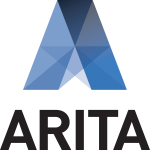
With the commencement on 1 September 2017 of the delayed parts of the Insolvency Law Reform Act 2016 (the ILRA), the Australian Restructuring Insolvency & Turnaround Association (ARITA) has updated the Insolvency Explained section of its website which provides information to stakeholders in the insolvency process, and has developed a range of information sheets designed to assist creditors with understanding insolvency processes.
This is a guide to ARITA’s information, with links to the relevant website pages.
1. Insolvency explained CLICK HERE
-
What is insolvency? CLICK HERE
- Overview of insolvency – corporate
-
What is bankruptcy? CLICK HERE
- Overview of insolvency – personal
-
How does insolvency work? CLICK HERE
-
Insolvency and creditors CLICK HERE
-
Insolvency and employees CLICK HERE
-
Insolvency and shareholders CLICK HERE
-
Insolvency and company directors CLICK HERE
-
Insolvency information sheets see section 2 below
-
Glossary of terms CLICK HERE
2. ARITA insolvency information sheets
The ARITA insolvency information sheets listed below may be downloaded from the page headed “Insolvency information sheets”. They are all in PDF format. ….. CLICK HERE
Company insolvency
- Creditor rights (liquidation)
- Creditors rights (voluntary administration)
- Remuneration of an external administrator
- Proposals without meetings
- Committees of Inspection
- Offences and recoverable transactions in a voluntary administration
Personal insolvency (including bankruptcy)
- Creditor rights
- Proposals without meetings
- Committees of Inspection.
A short history of the ILRA
The ILRA reform provisions relating to the rules and conduct of external administrations, commenced on 1 September 2017. This followed ILRA reform provisions relating to the registration and discipline of registered liquidators, and provisions relating to matters such as notification of contravention of a Deed of Company Arrangement and lodgement of a declaration of relevant relationships and declaration of indemnities in a voluntary administration, which commenced on 1 March 2017.
Parliament passed the Insolvency Law Reform Act 2016 (the ILRA) on 22 February 2016. The government registered the related Insolvency Practice Rules (Corporations) 2016 (the Rules) in December 2016. The ILRA and Rules change the law relating to the registration and discipline of liquidators and the conduct of external administrations.


 The following table sets out the proposed legislation by using extracts from the Bill and related official material.
The following table sets out the proposed legislation by using extracts from the Bill and related official material.